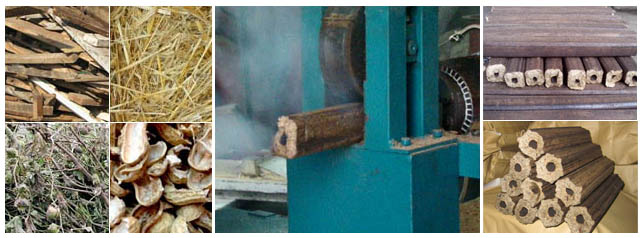Impact of spices of raw material to the cracks of biomass briquette
Sawdust has the best briquetting performance, and after the sawdust, it is corn straw and cotton straw, the worst effect of briquetting is the processing wood wastes. According to estimation, the worst for processing is the residues of decorations, it has big difference with pure sawdust which is bad for bonding, and the finished products may have big cracks with easy breaking. This problem has close relationship with the selection of material, but it has nothing to do with the briquetting technology.

During the compression process, the stickiness of plastic flow becomes much bigger when the material is up to its degree. The needed force for flow is more big, the friction force for flow is more big. The stickiness of plastic flow changes along with the up and down of temperature. When the temperature is high, thermal motion among the particles decrease the attraction force between the particles, and the friction force is smaller with lower stickiness.
Different material has different performance and moisture content during the
briquetting technology, so dose with the briquetting effect. In general, the hardwood is easy for briquetting, and the finished product are high in density and hardness. While the softwood or corps straw is low in density after densification, and they are soft and easy to break. So, when we talk about the briquetting technology, the first thing we should consider is the spices of material. Choosing proper material and use the machine which are adapt to the material is to ensure the result of briquette.
Briquettes have been used as fuel by more and more people because they can be used in automated boilers for space heating, also it can be used for industry use. In many countries there are significant resources of biomass residues, which are not needed for agriculture. Thus as the cost of conventional fuels increases, the use of biomass briquettes and pellets is likely to grow. So biomass briquetting is an ideal choice for investment.
------------------------------------------------------------------------------------------------
Biomass densification is the bonding together of waste biomass product, such as wood chips or sawdust, peanut husk, rice husk, sunflower seed husks, bagasse (sugar cane or sugar beet residue), coffee shells, coconut husks, etc.
